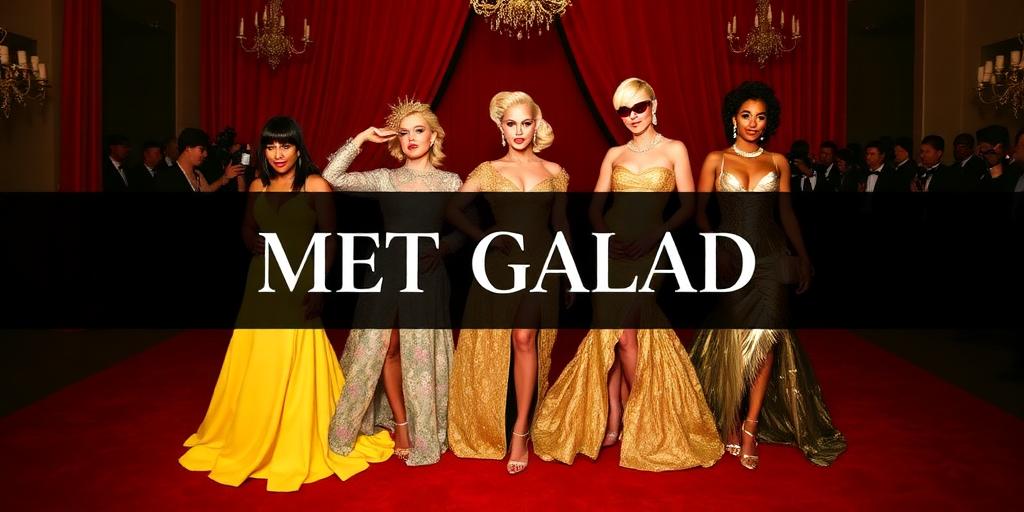The Met Gala, officially known as the Costume Institute Gala, stands as the paramount event on the fashion calendar, a veritable crucible where art, celebrity, and haute couture converge. Each year, under the auspices of a meticulously chosen theme, attendees are challenged to transcend conventional dressing, presenting sartorial interpretations that range from the sublime to the audacious. The resulting spectacle invariably generates extensive discourse, with certain ensembles achieving legendary status for their innovation, controversy, or sheer visual impact. This analysis delves into the most talked-about Met Gala outfits, examining their significance within the broader tapestry of fashion history and pop culture.
Rihanna's Imperial Yellow: Guo Pei (2015)
When Rihanna ascended the steps of the Metropolitan Museum of Art for the 2015 "China: Through the Looking Glass" theme, her magnificent yellow Guo Pei gown instantly solidified its place in Met Gala lore. This extraordinary creation, an imperial yellow cape dress adorned with intricate embroidery and fur trim, boasted a train of epic proportions that required multiple handlers. Its immense scale and vibrant hue made it an undeniable showstopper, sparking countless memes yet simultaneously earning universal acclaim from fashion critics for its dramatic flair and thematic adherence. It remains one of the most iconic Met Gala looks, a benchmark for future attendees.
Lady Gaga's Theatrical Transformation: Brandon Maxwell (2019)
For the "Camp: Notes on Fashion" theme in 2019, Lady Gaga delivered an unforgettable performance, presenting not one, but four distinct outfits by designer Brandon Maxwell. Her grand entrance began with an enormous fuchsia gown, swiftly shedding layers to reveal a sleek black dress, then a vibrant pink slip dress, and finally, a sparkling bra and underwear set. This multi-layered reveal was a masterclass in theatricality and a profound exploration of the evening's camp theme, demonstrating fashion as a vehicle for narrative and transformation. Gaga's presentation remains a pinnacle of memorable Met Gala fashion moments.
Billy Porter's Golden Ascension: The Blonds (2019)
Also at the 2019 "Camp" gala, Billy Porter redefined red-carpet entrance with an outfit that was less garment and more divine intervention. Arriving on a litter carried by six shirtless men, Porter emerged as an Egyptian sun god, resplendent in a custom "Sun God" ensemble by The Blonds. The look featured a glistening gold bodysuit, a 10-foot wing span, and a 24-karat gold headpiece. This audacious display was celebrated for its sheer extravagance, its commentary on queer iconography, and its powerful visual statement on masculinity and self-expression, earning its place among the most controversial Met Gala dresses in the best way possible.
Zendaya's Cinderella Moment: Tommy Hilfiger (2019)
Zendaya consistently impresses with her thematic interpretations, and her 2019 Cinderella gown for "Camp" was no exception. Designed by Tommy Hilfiger, the dress was not merely a homage but an interactive experience. Activated by her stylist Law Roach, the gown magically illuminated with LED lights, recreating the fairy godmother's transformation from the beloved tale. This playful yet technically brilliant ensemble captured the public's imagination, proving that innovation and a sense of wonder can still captivate in a world saturated with fashion imagery. This moment perfectly blended entertainment with high fashion, making it a truly talked-about outfit.
Kim Kardashian's Historical Homage: Marilyn Monroe's "Happy Birthday, Mr. President" Dress (2022)
The 2022 theme, "Gilded Glamour," saw Kim Kardashian don the actual dress worn by Marilyn Monroe in 1962 when she serenaded President John F. Kennedy. This decision ignited a firestorm of debate concerning the preservation of historical garments, the ethics of celebrity access, and the cultural implications of re-wearing such an iconic piece. While the garment's historical weight was undeniable, the controversy surrounding its loan and the perceived alteration to fit Kardashian fueled extensive discussion. It underscored the power of the Met Gala to spark conversations beyond mere aesthetics, exploring the boundaries of ownership and heritage in fashion.
The Met Gala continues to serve as an unparalleled platform for sartorial expression, where the boundaries of fashion are continually tested and redefined. The ensembles discussed here, each memorable for distinct reasons, collectively demonstrate the event's enduring capacity to generate significant cultural impact and shape the discourse around contemporary style. They are not merely dresses but statements, historical markers that reflect the evolving landscape of fashion, art, and celebrity.









